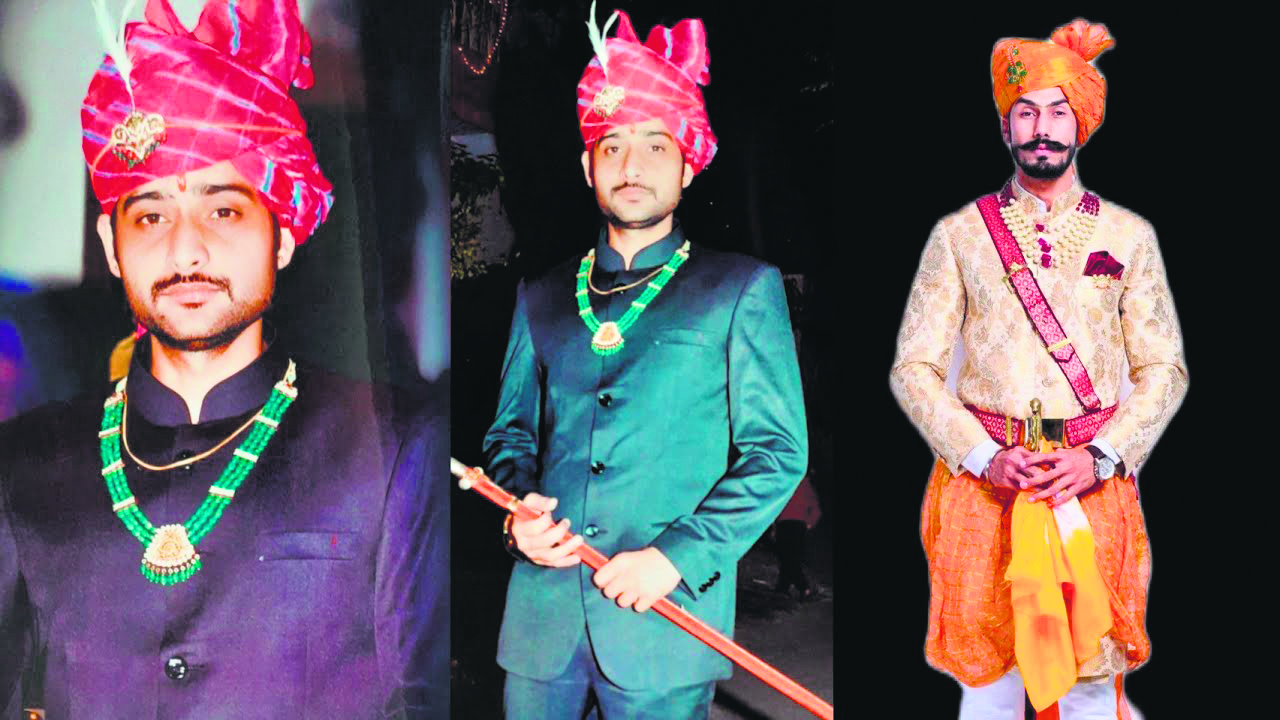Of the many styles and signature elements that have contributed to making the Maharani look eternal, the author lists four seamless stories that you can imbibe to look like a blue-blooded beauty.
 Maharani Gayatri Devi of Jaipur.
Maharani Gayatri Devi of Jaipur. Poshak by Mangalmayi.
Poshak by Mangalmayi. Aad neckpiece by Kanak Kriti jewels.
Aad neckpiece by Kanak Kriti jewels. Princess Maanvi Kumari of Jobat.
Princess Maanvi Kumari of Jobat. Ambika Raje Ghorpade of Sandur
Ambika Raje Ghorpade of Sandur Princess Nandini Singh of Jhabua wearing Justchiffons cutworm saree.
Princess Nandini Singh of Jhabua wearing Justchiffons cutworm saree.
 Maharani Indira Devi of Cooch Behar.
Maharani Indira Devi of Cooch Behar.
Maharanis from the erstwhile princely states of India have never failed to inspire and set unforgettable trends with their fashion choices. Whether it’s adorning jewels that are so expensive that only a few can afford them, converting Chantilly lace and printed floral chiffons imported from France into saris etched with vintage borders, or wearing a velvet cape embellished with the finest beading and embroidery crafted for them in their personal palace ateliers by European seamstresses, Indeed, women like Maharani Gayatri Devi of Jaipur, her mother Indira Devi of Cooch Behar, the beautiful Princess Niloufer of Hyderabad and the statuesque Rafat Zamani Begum of Rampur were eternal style icons, to say the least.
Of the many styles and signature elements that have contributed to making the Maharani look eternal, fashion stylist Ayra Imam lists four seamless stories that you can imbibe to look like a blue-blooded beauty.
PEARLY TALES
Jewels have been an integral part of the royal legacy. One cannot imagine scions of princely India stepping into their Durbars without exquisite jewels to add to their persona. While there have been numerous jewels, pearls have been fundamental to their adornment, leading them to be one of the most popularised and often worn gems by many royals since time immemorial.
Maharani Indira Devi of Cooch Behar was one such fanatic of pearls. A staple for her, she would pair her everyday sarees with a string of pearls. Her favourite was a simple two-or three-layer string of pearls. She was the only daughter of Maharaji Sayaji Rao and had grown up seeing her mother, Maharani Chimnabai II, wear pearls over her nine yards of Navasari in Chander weaves.
Worn simply or extravagantly, pearls have the opulent look needed to finish any look perfectly!
Ambika Raje Ghorpade, a Sandur sari influencer and royal, wears her precious pearls with an exquisite printed sari from The Silk Story to recreate her look. Try her look to feel an instant rush of regalia.
CHIFFONS
Chiffon has been a beautiful, translucent, and flowy fabric. It has been a classic style in the royal household. Women of Rajput ancestry wore chiffon every day, whether married in tribal Jhabua, freezing Kashmir, or to a family living in the silk belt of VIjaynagaram.
popularised by Maharani Gayatri Devi, who kept the tradition alive and wore chiffon saris on a regular basis. This royal classic style also inspired women from the upper echelons of North Indian society. Whilst we all know about floral saris, I would recommend you get inspired by this stunning embroidered chiffon sari by Just Chiffons, worn by Princess Maanvi Kumari of Jobat.
POSHAKS
The Rajputs have a rich heritage, culture, and history that is still alive to this day. The attire worn by Rajput brides and women at weddings is called a poshak. It’s a four-piece outfit that includes a body-fitting, backless Kanchi that doubles as a bustier, a loose-fitting kurti, a square-shaped odhni, and frilled, embroidered lehengas. An, intricately embroidered garment, wearing it is a tedious process that requires inherent craftsmanship.
Poshaks come in different design variations with Aari, zardozi, cutwork, Kundan work, Kalkatti work, Gota Patti work, etc. The most respected postal maker in Jaipur remains Mangalmayi by Sandeep Burad, a textile revivalist who has dressed hundreds of royal princesses on their special day.
AAD
Rajasthan is known for its traditional jewellery that combines various techniques of making. Be it intricate jadaus that are hand painted beautifully, or the meenakari technique, the art of inlay. However, one iconic piece of jewellery worn by royal women is the Aad, a necklace worn around a bride’s slender neck.
Made from the magnificent combination of Kundan and pearls, it is a form of necklace around the high neck.
Rajasthani aads appear in different varieties, including jadau, kundan, meena, and marwadi. Plus, there is the desi aad, which is clasped with a woven red, green, yellow, and pink cheeda (small pearls) in a multi-layer motif incorporating gold and silver threading.
The Aad by Kanak Kriti Jewels, a brand founded by Vibha Shekhawat, are possibly the most stunning pieces. especially when rendered in partaash ka kaam, an authentic and intricate gold setting technique that has been lovingly restored by this Rajput designer.
Get on the royal train and follow these trends to bring out the princess in you every day.













